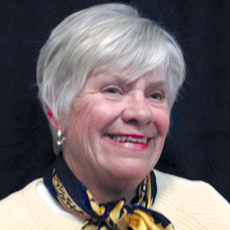
New ideas often come from old concepts. Remember the federal regulation addressing Quality of Care? Let’s look at that again and see how that can be used to address resident-centered care.
§483.25 Quality of Care (F-Tag 309)
“Each resident must receive and the facility must provide the necessary care and services to attain or maintain the highest practicable physical, mental, and psychosocial well-being, in accordance with the comprehensive assessment and plan of care.”
The stated intent is that the “facility must ensure that the resident obtains optimal improvement or does not deteriorate within the limits of a resident’s right to refuse treatment, and within the limits of recognized pathology and the normal aging process.”
Tying this into resident-centered care, why are 77% (according to the recent MDS Frequency Report) of the elderly living in nursing facilities today in wheelchairs as their main mode of transportation? It is a fact that 1.7% of muscle mass is lost per day when a resident sits for extended periods of time in a wheelchair, adding daily to the deterioration of those residents. Most facility staff do not know about the amount of muscle loss per day. Muscle mass loss does not show up in any color change. It just occurs silently.
What can we do as nursing home staff to change that number to maybe say 10 % of residents that must be in wheelchairs as their main mode of transport? When staff follow the intent of the 309, and facility staff want to address resident-centered care, all residents will go through a comprehensive assessment process during their initial assessment and then their quarterly review. When adding a simple question by asking all department staff one question to answer in their assessment process, resident-centered care will be addressed.
As all residents walked once, this is the question that needs to be asked. “Why is this resident in a wheelchair and what can we do as staff members to get this person walking safely once again?” Simple question, but all staff need to be part of the solution — from nursing, dietary, recreation therapy (activities), social services, occupational therapy and physical therapy. All staff need to know everything about each resident your facility is responsible in caring for and about.
Nurses need to examine the resident’s medications and see if any medications that the resident is on affects the resident’s functional ambulation status.
Dietary needs to look at calcium levels, vitamin D levels and bone density scores. If a resident has been diagnosed with osteoporosis, attention to increasing muscle mass to support the resident’s bones might be highly recommended.
Recreation therapy/activities need to design walking activities for all residents to encourage independent ambulation. Yes, all nursing homes must have Bingo, but other activities must be designed to keep the resident actively moving. Be creative for your residents in this area. Dancing, gardening, walks through interesting places … this is just the start of a long list.
Social services must present the social history of the resident, asking: “What did the resident enjoy actively doing before entering the nursing home?” And when the resident is up and walking, sturdy shoes are a must for each resident.
Occupation and physical therapy needs to complete evaluations on each resident to address each resident’s ADL needs and rehabilitation needs.
With this new resident-centered approach, all residents will have had completed care plans within three months of starting this new approach, and resident-centered care is well on its way to realization in your facility.
What changes do we need to make in daily resident care procedures to address resident-centered care? Each facility has certified nursing assistants to do restoration care on a daily basis with assigned residents, right? BUT, the procedure that has been constantly observed over many years is as follows: Two CNAs with gait belt in hand and pick-up walker go to an assigned resident to walk that resident. The gait belt is applied, the resident is lifted up from his/her wheelchair and then walks 15 or 20 paces up and down the hallway and placed back in the wheelchair for more extended seating. This restorative care only moves a little more blood through the resident’s body, but does not assist in rebuilding lost muscles.
Remember the 1.7% per day? What if those two CNAs were to lead daily exercises with up to four residents per day and get paid under the RUGS program for nursing low intensity restorative care? The intent of this procedure would be not only resident-centered care, as most residents want to get up and walk, hence why the use of chair alarms. But lower leg muscles would be strengthened and more residents would be up and walking safely. One retrained restorative CNA could exercise up to 40 residents per day in twenty minute sessions, with breaks. How many residents are being “walked” with the old procedure? And another question: How many residents are no longer using wheelchairs because of the present daily walking procedure? Not many, right?
What would the results be in your facility with this new procedure? First of all, resident-centered care would be addressed squarely. When residents are stronger, reductions in injurious falls would be realized, fewer residents would be bed-bound, resulting in less one-on-one required nursing care, greater reductions in pressure ulcer formations, and happier residents and family members. Other results would be realized as all the goals of Advancing Excellence would be met with one little change in care plan meeting procedures and care procedures.
So is your facility ready to address real resident-centered care?
Mary Harroun is the CEO of the Merry Walker Corporation.



